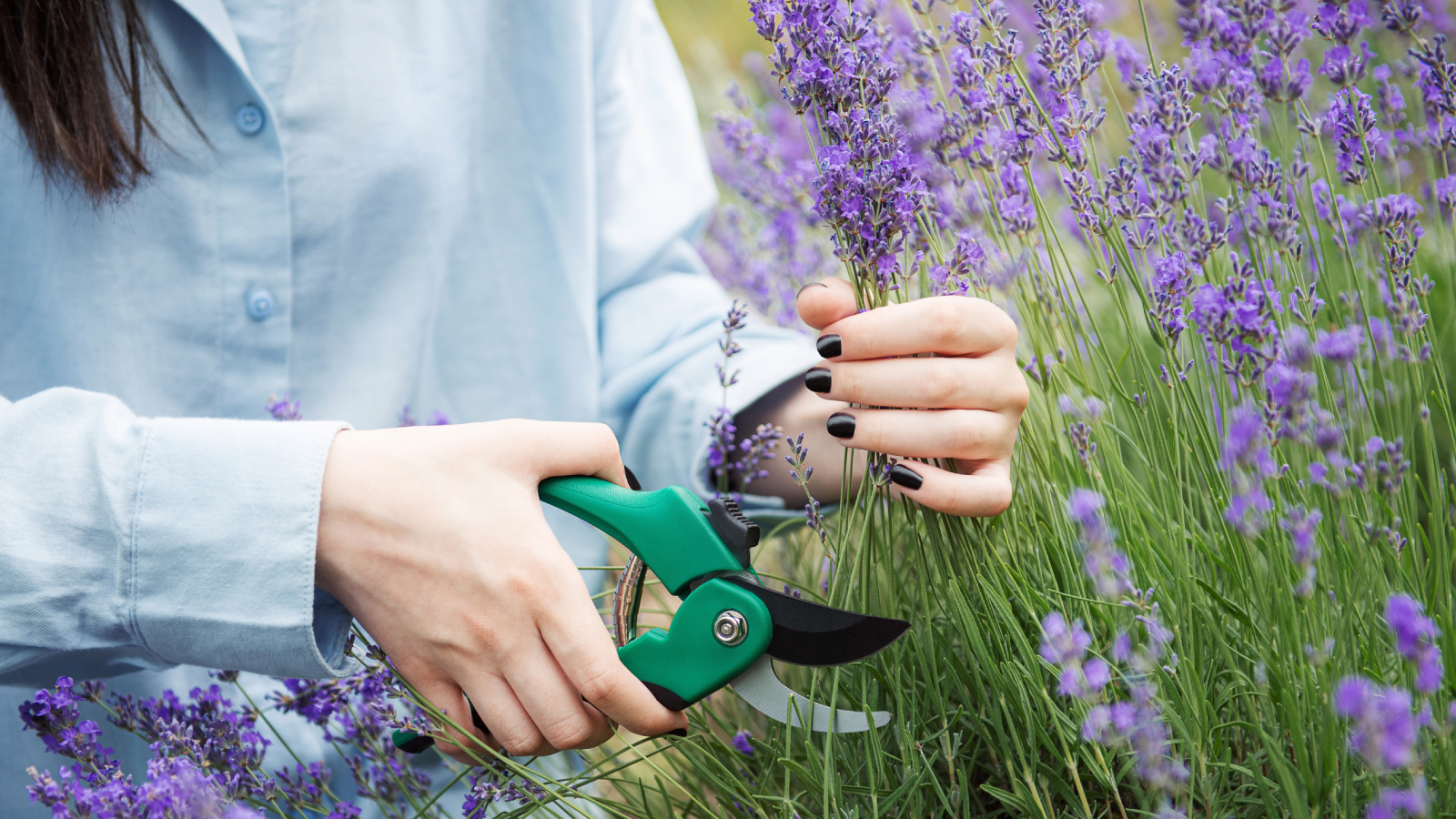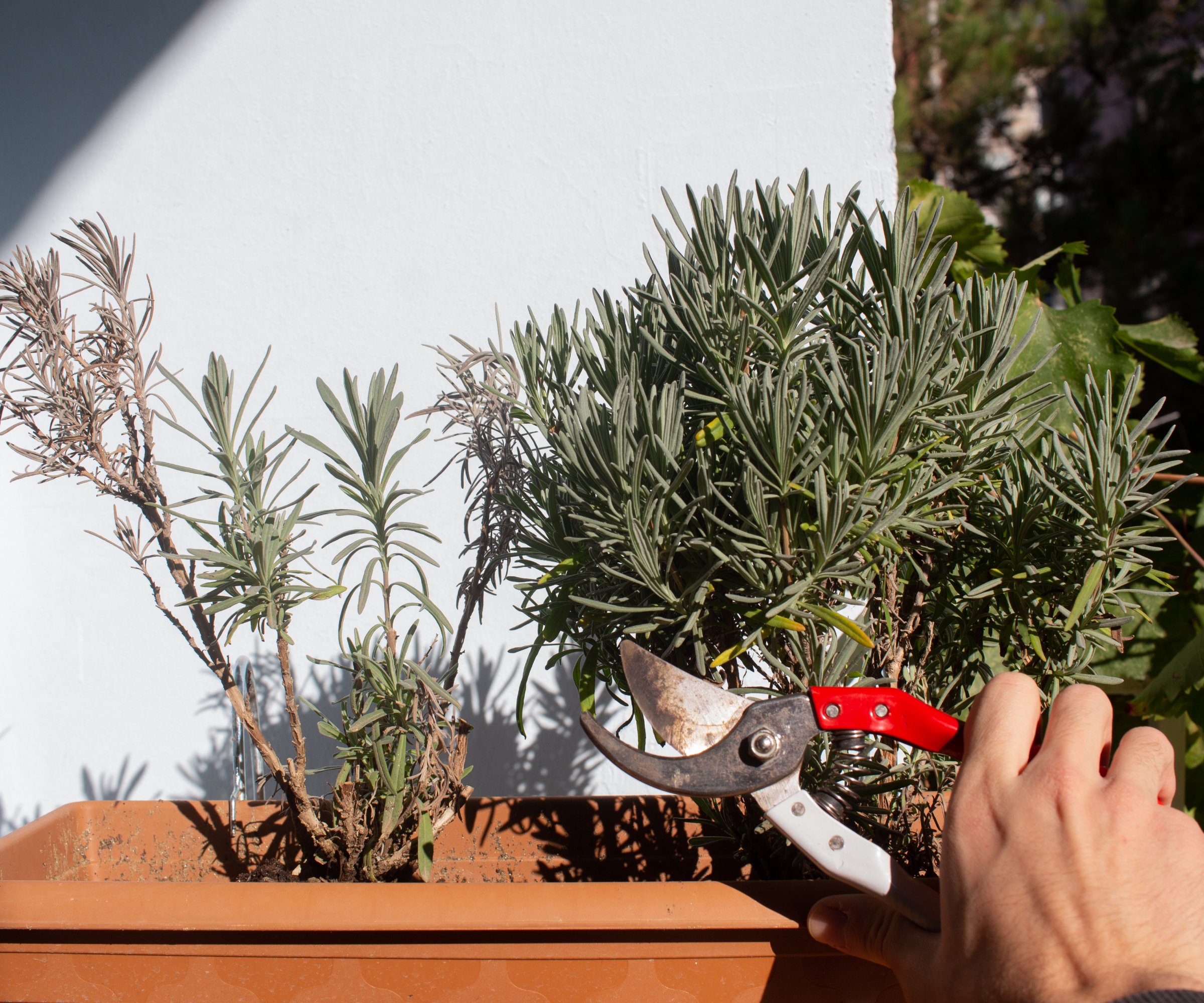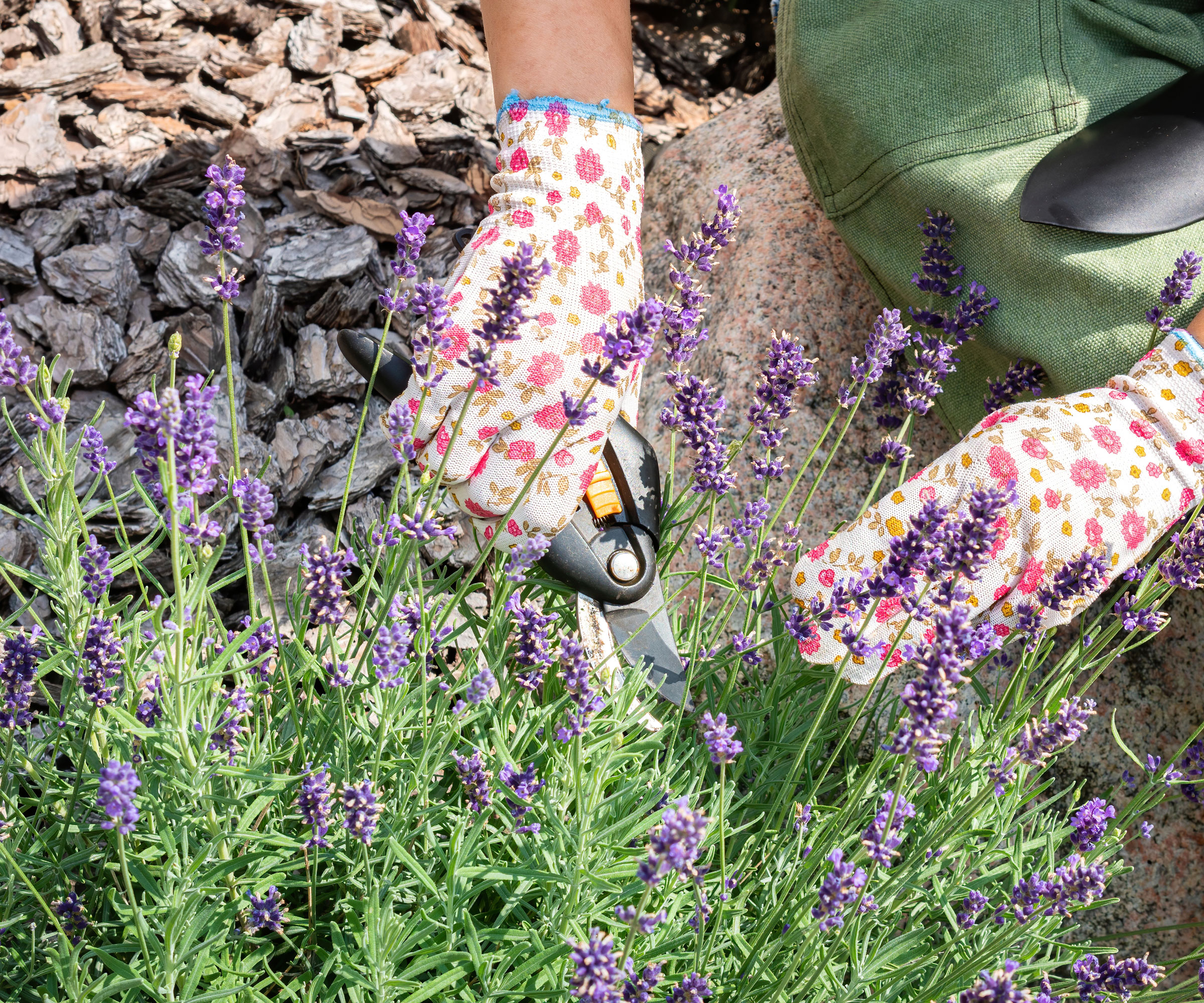How To Prune Lavender For Even More Heavenly-Scented Blooms – Just Follow These 5 Simple Tips
Pruning lavender at the right way is essential for promoting robust growth and prolific flowering. Here's how and when to do it for the best results.


Heather Rhoades
Lavender is a favorite herb for its pretty purple blooms and distinctive aroma. You can enjoy this perennial as a low border, hedge, or containers. But no matter where you grow it, knowing how and when to prune lavender is essential for healthy growth and an abundance of its prized fragrant foliage and flowers.
Pruning is key to growing lavender plants that are healthy and full of blooms. If you don’t prune plants regularly, they will become woody and produce fewer fragrant leaves and flowers.
This simple guide will help you learn how to prune lavender properly for lush plants full of sweet-smelling blooms.
Benefits of Pruning Lavender
There are several important benefits to pruning and knowing how to prune lavender correctly:
- Pruning prevents your lavender plants from becoming woody.
- It keeps the growth and shape bushy and dense rather than leggy.
- It promotes flowering and even reblooming later in the season.
- Pruning keeps the plant healthier overall.
- You can prune cuttings to propagate lavender plants and expand your garden for free.
- Use clippings the same way as a regular lavender harvest. Put pruned stems into sachets and pop them into your drawers for sweet-scented clothes or towels.

When to Prune Lavender
Knowing when to prune plants is essential for getting all the benefits of this important garden task.
Don’t prune the first year that you plant your lavender. Plants need a year of growth to put energy into developing strong roots. If you prune now, plants will direct their energy into new leaves and flowers, which can weaken their roots and the overall plant long-term.
Start trimming lavender plants during the second year they’re in the ground and fully established. Spring is the best time to prune back your lavender plants. Wait for signs of new, green growth at the base of the plant before pruning. Also, wait for any danger of frost to pass.
Sign up for the Gardening Know How newsletter today and receive a free copy of our e-book "How to Grow Delicious Tomatoes".
You can also do some light pruning after flowering. This can lead to a second set of blooms in the same growing season. Avoid pruning too late in the season, though—generally not after August.

How to Prune Lavender
Pruning a lavender shrub is easy if you follow a few pruning basics:
1. Use Sharp, Clean Pruners
When pruning lavender, it's important to start out with a sharp, clean set of pruning shears. This pair of pruners from Fiskars is a bestseller on Amazon and perfect for the job.
Wipe down the blades of your pruning shears with rubbing alcohol or bleach to make sure all bacteria and potentially harmful germs are removed from the blades.
2. Make Clean-Up Cuts First
Remove any dead, damaged, or diseased branches to maintain the plant's overall health and appearance. You can do this kind of pruning at any time during the year since you are making cuts to clean up and keep your lavender healthy.
3. Follow the One-Third Rule
Trim back the healthy stems and branches by about one-third. This will force the lavender to create new and more growth, which will not only prevent lavender from becoming woody, but will also help to increase the amount of lavender available for harvest later in the season.
Do not prune all the way down to the woody part of your plants. They won’t regrow well after such a severe cut. Either follow the one-third rule or be sure the remaining stems are at least 4 to 6 inches (10-15 cm) long after pruning.

4. Always Cut Above a Node
When pruning lavender, make cuts just above a node to promote branching and bushy growth. A node is where the leaves attach to the stem. Avoid cutting into the woody part of the plants, as you might not get new growth from these cuts. Only cut the green parts of the plant.
5. Deadhead for More Blooms
You can help encourage a second bloom from your plants by deadheading lavender later in the season. Once flowers have bloomed, deadhead them and do some light trimming to encourage additional flowers. These thumb knives from Amazon make deadheading extra easy.
Stop pruning by August, though, to let plants get ready for dormancy and store up energy to help them bloom next year.
Explore Herb Gardening Essentials
- Spice up your landscape with these front yard herb garden ideas that look as good as they taste!
- Keep grocery store herbs thriving indoors for months and keep enjoying the taste of homegrown herbs for longer with these simple tips.
- Go from garden to table in no time! These easy-to-use herb scissors let you harvest and chop herbs all at once.

Mary Ellen Ellis has been gardening for over 20 years. With degrees in Chemistry and Biology, Mary Ellen's specialties are flowers, native plants, and herbs.
- Heather RhoadesFounder of Gardening Know How